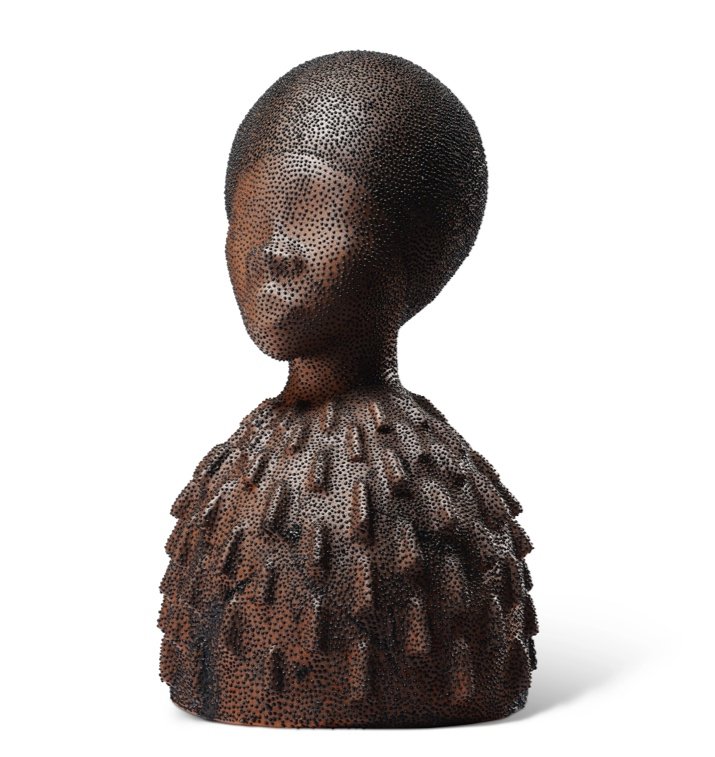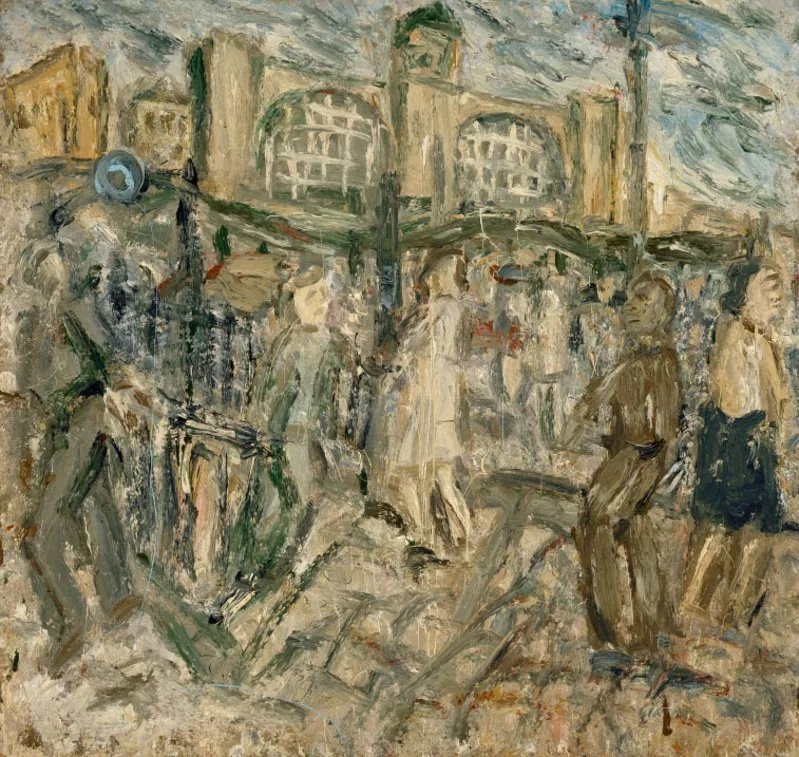Firing the Imagination
26 JANUARY 2022
From the Paleolithic era to Picasso - the rise of ceramics.
Billy Jobling
Billy Jobling is Senior Writer and Researcher in the Post-War and Contemporary Art department at Christie's, London.
FONTANA, Lucio 1899-1968
Crocifisso, price realised €593,400 Christie’s
‘Needless to say Sèvres has killed ceramics’, wrote Paul Gauguin in 1889. ‘… With the American Indians it was a central art. God gave man a little bit of mud, with a little bit of mud he made metal and precious stones, with a little bit of mud and a little bit of genius.’
Gauguin’s own radical ceramic works, of which around sixty survive today, rarely appear on the market and can command hundreds of thousands at auction. These vivid, deliberately non-functional vessels were part of his engagement with the ‘primitive’ artistic spirit.
The great Spatialist Lucio Fontana, who pushed clay into bold sculptural shapes, similarly claimed to detest ‘lacy designs and dainty nuances.’ His dramatic, Baroque-inspired figures and Crucifixions of the 1940s are especially sought after; a spectacular ceramic fireplace hit the record price of €1,450,200 in 2015.
The delicate, decorative objects these modern artists so disdained are, of course, only part of the story. Pottery has been part of human life since the Palaeolithic era and covers myriad forms and functions, from the practical to the pretty and the earthy to the ethereal. Broadly, though, to make ceramics has always meant to work with your hands. The increasing interest in ‘craft’-based TV shows such as Channel Four’s The Great Pottery Throwdown speaks to a renewed popular appreciation for the handmade and tactile. In our age of NFTs and immaterial imagery, ceramics offer something to hold on to, and seem to be having something of a moment.
This year’s ennoblement of Sir Grayson Perry, while also honouring Perry’s achievements as a broadcaster, writer and public figure, is testament to ceramics’ ascendancy in the field of contemporary art. Twenty years ago, Perry was the first ceramic artist to win the Turner Prize. His vases might look classical or domestic from afar, but incorporate subversive images and text that deliver biting social commentary and complex autobiographical themes. His Warhol-Basquiat tribute I Want To Be An Artist sold for a record-breaking £632,750 in 2017; twelve more vases have achieved prices over £100,000 since then.
PERRY, Grayson b.1960
I Want To Be An Artist, price realised £632,750 Christie’s
The ceramics of Pablo Picasso are a perennial—and accessible—auction favourite. Plates, plaques, bowls and vases produced at the Madoura pottery in Vallauris can be found for a few thousand dollars upwards. Inventive, colourful and often charming in design, these editioned works offer an appealing entry point to the Spanish master’s practice. A unique prototype of his Grand vase aux femmes voilées (1950), which sold for almost a million pounds in 2013, holds the record—still a bargain relative to his work on canvas.
Collectors of a more esoteric persuasion might consider George Ohr, the self-styled ‘Mad Potter of Biloxi’, who died relatively unknown in 1918. His studio, a five-story wooden pagoda in Biloxi, Mississippi, overflowed with pots in transgressive shapes and colours, many of them rumpled, frilled or ‘scroddled’—made from scraps of differently coloured clay. Half a century after his death, a cache of some seven thousand pots was rediscovered in his son’s auto-repair garage. Artists Jasper Johns and Andy Warhol began buying Ohr in the 1980s, followed by celebrity collectors including Steven Spielberg and Jack Nicholson. He retains a devoted following today: exceptional works command thirty to fifty thousand dollars at auction.
The equally rebellious Peter Voulkos, who founded the art ceramics department at the Los Angeles County Art Institute in 1954, reinvented ceramics during the years of Abstract Expressionism. ‘Calling Peter Voulkos a ceramist’, wrote Karen Rosenberg in 2016, ‘is a bit like calling Jimi Hendrix a guitarist.’ A master of functional pottery, he went on to work gesturally and monumentally—sometimes in front of a live audience—creating towering behemoths from paddled, wheel-thrown and slab elements. These ‘stacks’ have sold for major prices in recent years, but Voulkos’s chargers, bowls and plates can still be picked up for a few thousand dollars.
LEIGH, Simone b.1967
Untitled VI (Anatomy of Architecture Series), price realised $819,000 Christie’s
Among Voulkos’s students was the West Coast abstractionist Ken Price, whose psychedelic fired-clay sculptures drew on Surrealism and surf culture. His work was recently included in the Hayward Gallery’s group show Strange Clay: Ceramics in Contemporary Art, which closed on 8 January this year. The exhibition showcased the medium’s wild mutability in an array of works—by turns painterly and sculptural, cerebral, playful and technically dazzling—by artists including Price, Takuro Kuwata, Rachel Kneebone, Jonathan Baldock, Beate Kuhn and Leilah Babirye.
At the Whitechapel Gallery in 2021, Theaster Gates’ exhibition A Clay Sermon explored the material, social and spiritual potency of clay, from its ritual and ceremonial uses to its role in colonialism. Alongside his own early hand-thrown pots, large stoneware vases and totemic ‘Afro-Mingei’ sculptures—which combine themes of Black identity and Japanese philosophy—Gates made a selection of historic ceramics from collections including the Victoria and Albert Museum. ‘As a potter’, the Chicago-based artist said, ‘you learn how to shape the world.’
Simone Leigh, who last year became the first Black woman to represent the United States at the Venice Biennale, uses ceramics—among other media—in similarly complex works that layer references to African traditions, ethnographic research, and feminist and post-colonial theory. After years working in relative obscurity, her star has risen over the past decade. A small-scale sculpture from her Anatomy of Architecture series, which conflate women’s heads with pitcher or vase-like forms, recently sold for more than $800,000 at auction. In Leigh’s hands and others, the future of ceramics in contemporary art looks brighter than Gauguin could have imagined.

































